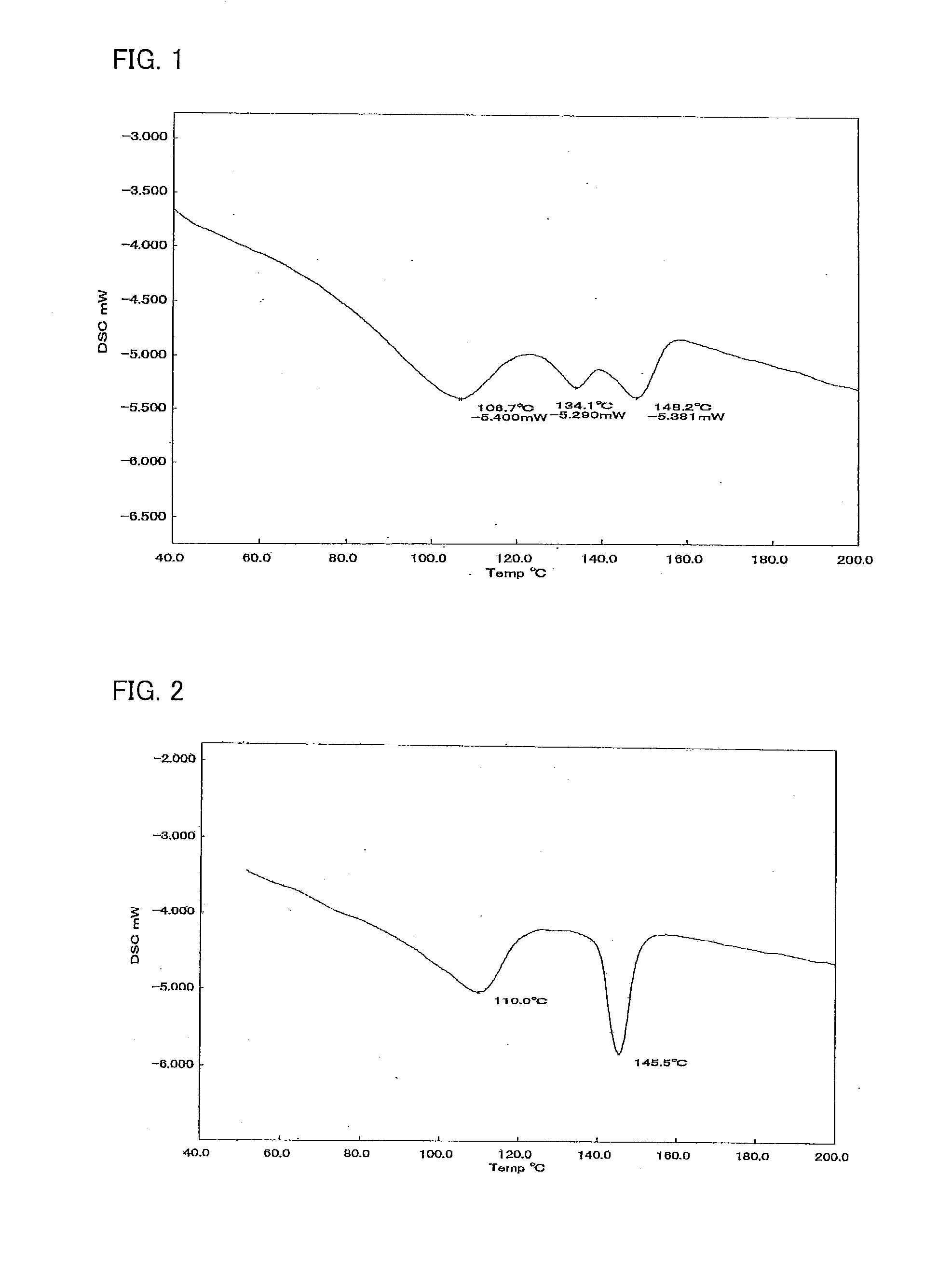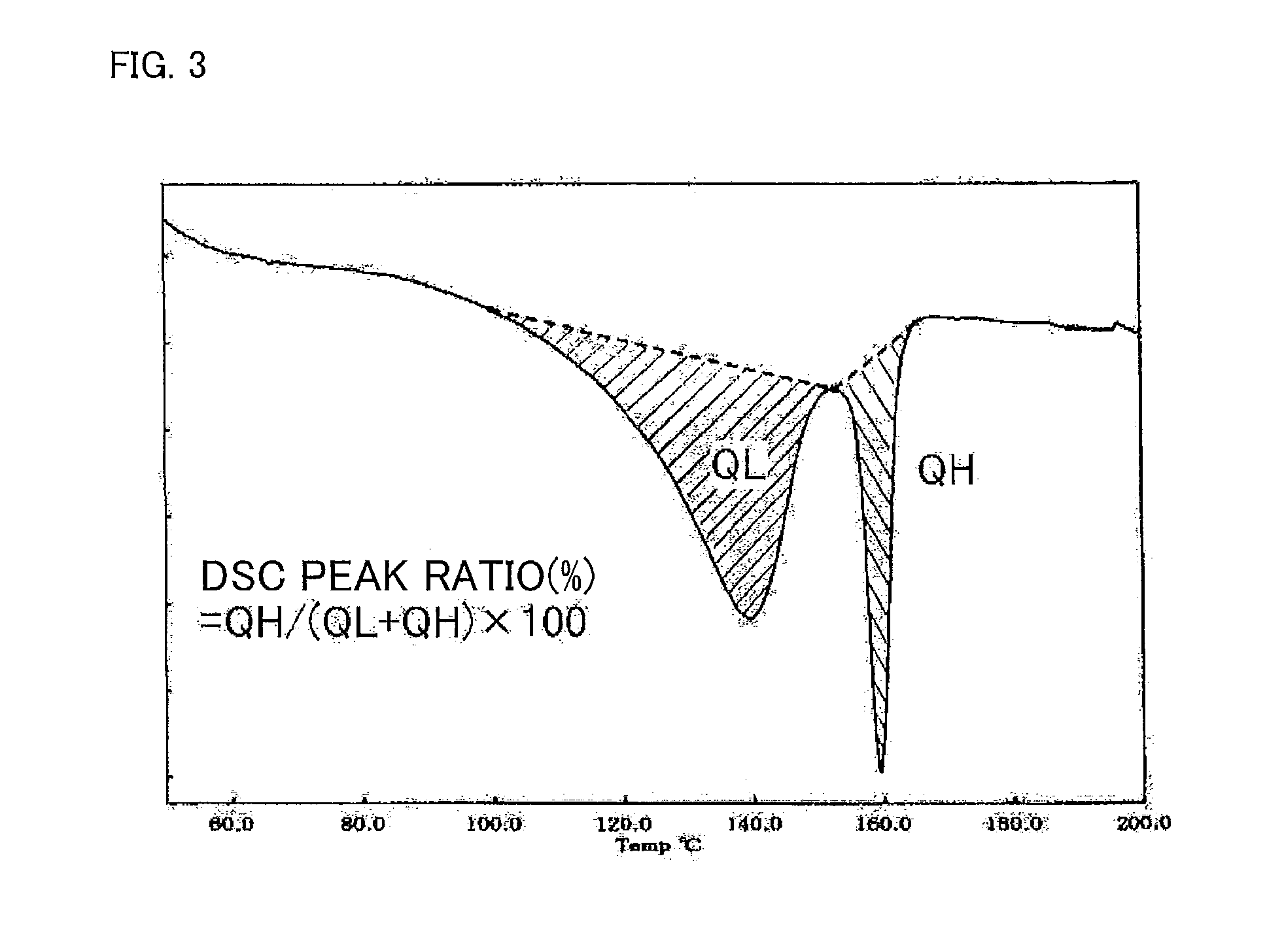Polypropylene resin expanded particles and polypropylene resin in-mold foaming molded body
- Summary
- Abstract
- Description
- Claims
- Application Information
AI Technical Summary
Benefits of technology
Problems solved by technology
Method used
Image
Examples
example 1
Production of Propylene-Ethylene Random Copolymer Using a Metallocene Polymerization Catalyst
[0131](1) Production of Solid Catalyst Carrier
[0132]300 g of SiO2 (produced by Dohkai Chemical Industries Co., Ltd.) was sampled into a 1 L side-arm flask, and slurred with 800 mL of toluene added into the flask after the sampling of SiO2. Then, this slurry was transferred into a 5 L four-necked flask, and 260 mL of toluene was added into the slurry. Further, 2830 mL of methylaluminoxane (hereinafter, MAO) toluene solution (solution of 10% by weight, produced by ALBEMARLE JAPAN CORPORATION) was introduced into the flask, and the mixture thus obtained was agitated for 30 minutes. A temperature in the flask was raised to 110° C. gradually over one hour, and the mixture was agitated for four hours at 110° C. After this agitation, the mixture was cooled to a room temperature.
[0133]After cooling, a supernatant toluene was removed from the mixture, and fresh toluene was supplied to the mixture in ...
example 2
[0156]A propylene-ethylene random copolymer was obtained in the same way as Example 1, except for the followings: in polymerization (5) of according to Example 1, (i) hydrogen was supplied into a polymerization vessel (capacity: 1000 L) so that concentration of hydrogen became 0.45% by mol in a gas phase section and (ii) hydrogen was supplied into a polymerization vessel (capacity: 500 L) so that concentration of hydrogen became 0.45% by mol in a gas phase section.
[0157]The propylene-ethylene random copolymer thus obtained had ethylene content of 5.2% by weight and polypropylene homopolymer content of 15% by weight, and a lowest melting peak temperature and a highest melting peak temperature which were obtained by the measurements of the melting points using the differential scanning calorimeter were 104° C. and 146° C., respectively, and MFR was 17 g / 10 min.
[0158]Resin particles, expanded particles, and an in-mold foaming molded product were obtained in the same way as Example 1, ...
example 3
[0159]A propylene-ethylene random copolymer was obtained in the same way as Example 1, except for the followings: in polymerization (5) of according to Example 1, (i) hydrogen was supplied into a polymerization vessel (capacity: 1000 L) so that concentration of hydrogen became 0.52% by mol in a gas phase section and (ii) hydrogen was supplied into a polymerization vessel (capacity: 500 L) so that concentration of hydrogen became 0.52% by mol in a gas phase section.
[0160]The propylene-ethylene random copolymer thus obtained had ethylene content of 5.2% by weight and polypropylene homopolymer content of 15% by weight, and a lowest melting peak temperature and a highest melting peak temperature which were obtained by the measurements of the melting points using the differential scanning calorimeter were 106° C. and 146° C., respectively, and MFR was 24 g / 10 min.
[0161]Resin particles, expanded particles, and an in-mold foaming molded product were obtained in the same way as Example 1, ...
PUM
| Property | Measurement | Unit |
|---|---|---|
| Temperature | aaaaa | aaaaa |
| Temperature | aaaaa | aaaaa |
| Temperature | aaaaa | aaaaa |
Abstract
Description
Claims
Application Information
 Login to View More
Login to View More - R&D
- Intellectual Property
- Life Sciences
- Materials
- Tech Scout
- Unparalleled Data Quality
- Higher Quality Content
- 60% Fewer Hallucinations
Browse by: Latest US Patents, China's latest patents, Technical Efficacy Thesaurus, Application Domain, Technology Topic, Popular Technical Reports.
© 2025 PatSnap. All rights reserved.Legal|Privacy policy|Modern Slavery Act Transparency Statement|Sitemap|About US| Contact US: help@patsnap.com



